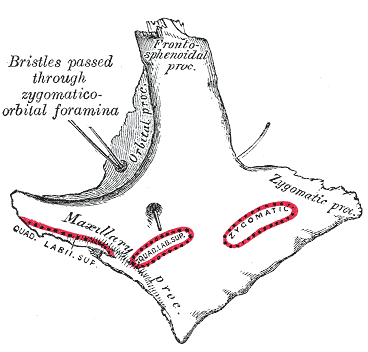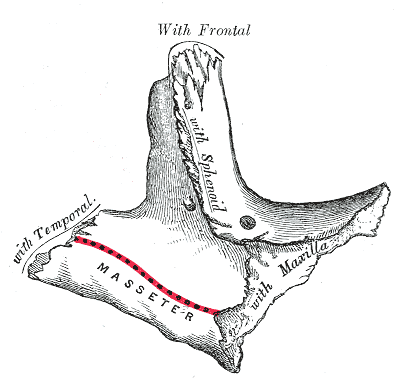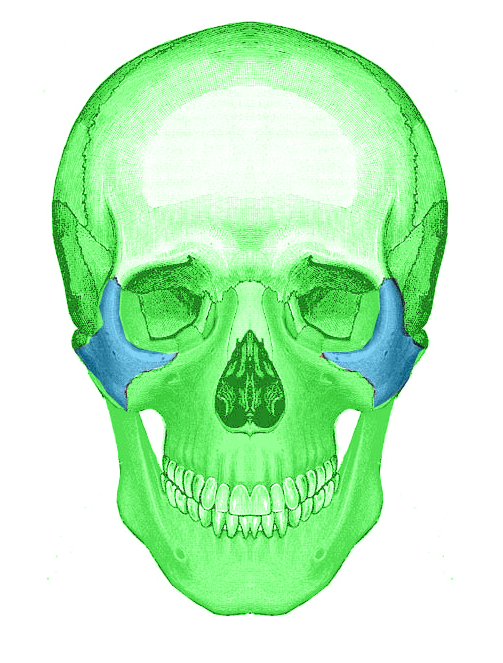[1]
Ungari C, Filiaci F, Riccardi E, Rinna C, Iannetti G. Etiology and incidence of zygomatic fracture: a retrospective study related to a series of 642 patients. European review for medical and pharmacological sciences. 2012 Oct:16(11):1559-62
[PubMed PMID: 23111970]
Level 2 (mid-level) evidence
[2]
Wang Q, Dechow PC. Divided Zygomatic Bone in Primates With Implications of Skull Morphology and Biomechanics. Anatomical record (Hoboken, N.J. : 2007). 2016 Dec:299(12):1801-1829. doi: 10.1002/ar.23448. Epub
[PubMed PMID: 27870346]
[3]
Malaviya P, Choudhary S. Zygomaticomaxillary buttress and its dilemma. Journal of the Korean Association of Oral and Maxillofacial Surgeons. 2018 Aug:44(4):151-158. doi: 10.5125/jkaoms.2018.44.4.151. Epub 2018 Aug 29
[PubMed PMID: 30181981]
[4]
Smith AL, Grosse IR. The Biomechanics of Zygomatic Arch Shape. Anatomical record (Hoboken, N.J. : 2007). 2016 Dec:299(12):1734-1752. doi: 10.1002/ar.23484. Epub
[PubMed PMID: 27870343]
[5]
Heuzé Y, Kawasaki K, Schwarz T, Schoenebeck JJ, Richtsmeier JT. Developmental and Evolutionary Significance of the Zygomatic Bone. Anatomical record (Hoboken, N.J. : 2007). 2016 Dec:299(12):1616-1630. doi: 10.1002/ar.23449. Epub
[PubMed PMID: 27870340]
[6]
Otake I, Kageyama I, Mataga I. Clinical anatomy of the maxillary artery. Okajimas folia anatomica Japonica. 2011 Feb:87(4):155-64
[PubMed PMID: 21516980]
[7]
Gharb BB, Rampazzo A, Kutz JE, Bright L, Doumit G, Harter TB. Vascularization of the facial bones by the facial artery: implications for full face allotransplantation. Plastic and reconstructive surgery. 2014 May:133(5):1153-1165. doi: 10.1097/PRS.0000000000000111. Epub
[PubMed PMID: 24445880]
[9]
Iwanaga J, Wilson C, Watanabe K, Oskouian RJ, Tubbs RS. Anatomical Study of the Zygomaticotemporal Branch Inside the Orbit. Cureus. 2017 Sep 29:9(9):e1727. doi: 10.7759/cureus.1727. Epub 2017 Sep 29
[PubMed PMID: 29201576]
[10]
Khalid S, Iwanaga J, Loukas M, Tubbs RS. Bilateral Absence of the Zygomatic Nerve and Zygomaticofacial Nerve and Foramina. Cureus. 2017 Jul 23:9(7):e1505. doi: 10.7759/cureus.1505. Epub 2017 Jul 23
[PubMed PMID: 28948125]
[11]
Iwanaga J, Badaloni F, Watanabe K, Yamaki KI, Oskouian RJ, Tubbs RS. Anatomical Study of the Zygomaticofacial Foramen and Its Related Canal. The Journal of craniofacial surgery. 2018 Jul:29(5):1363-1365. doi: 10.1097/SCS.0000000000004457. Epub
[PubMed PMID: 29521755]
[12]
Dechow PC, Wang Q. Development, Structure, and Function of the Zygomatic Bones: What is New and Why Do We Care? Anatomical record (Hoboken, N.J. : 2007). 2016 Dec:299(12):1611-1615. doi: 10.1002/ar.23480. Epub
[PubMed PMID: 27870341]
[13]
Márquez S, Pagano AS, Schwartz JH, Curtis A, Delman BN, Lawson W, Laitman JT. Toward Understanding the Mammalian Zygoma: Insights From Comparative Anatomy, Growth and Development, and Morphometric Analysis. Anatomical record (Hoboken, N.J. : 2007). 2017 Jan:300(1):76-151. doi: 10.1002/ar.23485. Epub
[PubMed PMID: 28000398]
Level 2 (mid-level) evidence
[14]
Martins C, Li X, Rhoton AL Jr. Role of the zygomaticofacial foramen in the orbitozygomatic craniotomy: anatomic report. Neurosurgery. 2003 Jul:53(1):168-72; discussion 172-3
[PubMed PMID: 12823886]
[15]
Oettlé AC, Demeter FP, L'abbé EN. Ancestral Variations in the Shape and Size of the Zygoma. Anatomical record (Hoboken, N.J. : 2007). 2017 Jan:300(1):196-208. doi: 10.1002/ar.23469. Epub
[PubMed PMID: 28000408]
[16]
Lee EI, Mohan K, Koshy JC, Hollier LH Jr. Optimizing the surgical management of zygomaticomaxillary complex fractures. Seminars in plastic surgery. 2010 Nov:24(4):389-97. doi: 10.1055/s-0030-1269768. Epub
[PubMed PMID: 22550463]
[17]
Demirdöver C, Sahin B, Ozkan HS, Durmuş EU, Oztan HY. Isolated fibrous dysplasia of the zygomatic bone. The Journal of craniofacial surgery. 2010 Sep:21(5):1583-4. doi: 10.1097/SCS.0b013e3181edc5af. Epub
[PubMed PMID: 20818245]



